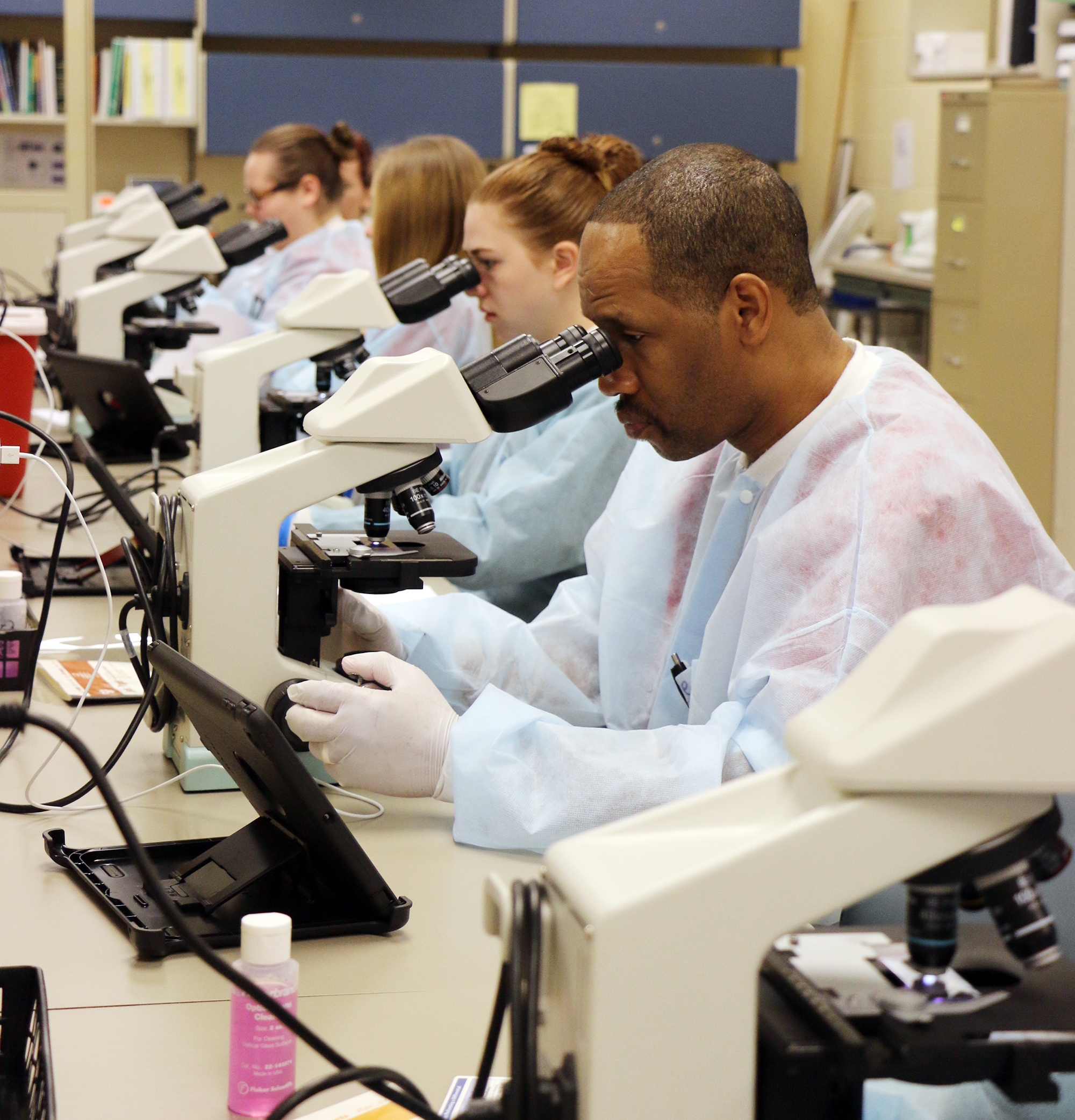Wallace State Medical Laboratory Technician students Steven Duncan of Fayette and Taylor Ellis of Guntersville count white blood cells during a class exercise. Each student in the program now has access to an iPad they use before, during and after class exercises for an almost paperless process.
HANCEVILLE – Keeping track of class exercises, policies and procedures and even using their textbook has gotten easier for Medical Laboratory Technician (MLT) students at Wallace State Community College with the help of some modern technology. Instead of compiling thick three-ring binders of all of that information, students are now able to keep all of it on an iPad and upload those exercises to Blackboard, the online information exchange program between students and instructors.
MLT program director Melanie Bradford said using the iPads is beneficial to students in several ways. The first is that it saves them time and money in printing out reams of paper in advance of class exercises and the results of each afterwards.
Because the MLT lab is considered a biohazard area, the students cannot bring in objects from outside the lab, even notes they may have written for an upcoming exercise. Notes they’ve printed out could be brought in and placed in a three-ring binder they have stored in the lab. Results for exercises and tests were also printed out and placed in the binder that stays in the lab, with the instructor going through the tests and posting the information to Blackboard. Over time, students could accumulate enough paperwork to fill two binders, Bradford said.
Now with the iPads that were donated from another department, the students have access to an electronic version of their textbook, the policies and procedures for exercises they download from Blackboard, and their own notes that they’ve created. They use free apps for making calculations and there’s even an app for the differential cell counters they use to count blood cells. Before, the program had four of the counters – priced at about $1,000 each – to share among a dozen students. Now each student has access to his or her own counter through the free app.
During class exercises, the students now fill in electronic forms for their “patient’s” lab work and upload those files to Blackboard, eliminating more paper from the process and giving the students a better understanding of how things will work once they are working in the field.
Bradford said the industry has moved away from paper files and medical lab technicians, more often than not, will be using computer software to input results from lab tests and upload that information into a computer system. The students appreciate the ease of using the iPad and the money saved in printing out their notes, paperwork and class exercises.
Wallace State’s Medical Laboratory Technician program is a five-semester program offering an Associate in Applied Science degree. It has a 93 percent job placement rate and a 90 percent pass rate over the last three years for students passing the national certification exam. Both statistics are well above the benchmarks set by the National Accrediting Agency for Clinical Lab Sciences (NAACL), which is the accrediting agency of the program.
According to the U.S. Bureau of Labor Statistics (BLS), employment of medical and clinical laboratory technicians is expected to increase by 18 percent between 2014 and 2024. The BLS reports that the median annual wage for medical and clinical lab technicians in 2015 was $38,970.
For more information about the Medical Laboratory Technician program, contact Melanie Bradford at 256-352-8347 or melanie.bradford@wallacestate.edu or visit the Medical Laboratory Technician page at www.wallacestate.edu/mlt.





















